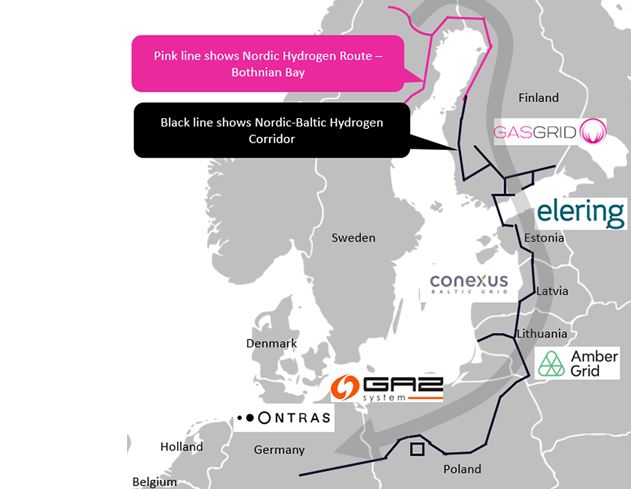Gas transmission system operators (TSOs) from six EU countries are translating the European Hydrogen Backbone (EHB) vision into concrete action.
The TSOs from Finland, Estonia, Latvia, Lithuania, Poland, and Germany signed a pivotal cooperation agreement, marking the inception of the Nordic-Baltic Hydrogen Corridor.
The Nordic-Baltic Hydrogen Corridor aims to forge a hydrogen infrastructure that traverses Finland, Estonia, Latvia, Lithuania, and Poland, culminating in Germany. This strategic endeavor aligns with the REPowerEU 2030 targets, reinforcing energy security, diminishing dependence on imported fossil energy, and playing a pivotal role in the decarbonization of societies and energy-intensive industries along the corridor.
At the heart of the project lies the transformative potential of green hydrogen. The corridor seeks to replace fossil-based production and consumption in industries, transportation, electricity, and heating with renewable green hydrogen. By fostering the production and transportation of green hydrogen in the Baltic Sea area, the project envisions a substantial reduction in greenhouse gas emissions and the creation of a robust market for hydrogen.
The Nordic-Baltic Hydrogen Corridor emerges as a strategic pillar supporting various EU initiatives, including the EU Green Deal and the Fit for 55 package. In particular, the project aligns seamlessly with the EU’s hydrogen strategy and REPowerEU plan, emphasizing its commitment to regional and EU climate targets. The corridor serves as a catalyst for diversifying energy supplies, expediting the adoption of renewable energy, and contributing significantly to the EU’s target of 10 million tonnes of domestic renewable hydrogen production by 2030.
